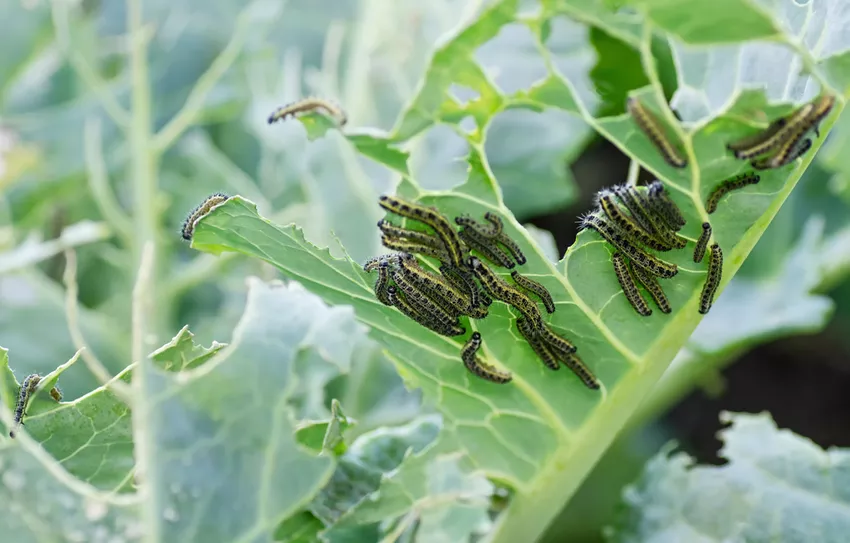There are some caterpillars that prey on the crops in the garden. In the absence of natural opponents, the voracious offspring of various moths spread uncontrollably and leave behind devastating damage. Harvest losses are not uncommon.
 Cabbage white caterpillars usually appear in flocks
Cabbage white caterpillars usually appear in flocks
Harmful images and control
Depending on the type of caterpillar, the pests attack above-ground parts of plants or roots. They feed on plant tissue, with the species preferring different plants. The larvae are often well camouflaged and difficult to spot. Eating marks such as leaves eaten down to the leaf veins indicate an infestation.
What helps
Protect the cultures with close-meshed nets so that the moths cannot lay their eggs on the plants or the soil. It is usually sufficient to collect the caterpillars. You can transport these in a bucket and release them in a forest. If the pests have spread, hosing them off with a strong jet of water will help. Collect the creatures lying on the ground quickly. When growing, pay attention to mixed cultures and put aromatic herbs such as garlic, basil, onions or oregano in the bed.
Identify harmful caterpillars
There are a number of butterflies and moths that feed on ornamental and useful plants in their early stages of development. Usually they do not become a threat when natural predators are present.
Cabbage White
The cabbage white prefers to eat cruciferous vegetables, which also include the various types of cabbage. Its offspring can cause devastating feeding damage in summer. The small cabbage white is also dangerous for cabbage vegetables and nasturtiums.
Identifying features:
- Large cabbage white lays eggs with ten to 20 pieces
- its caterpillars are yellowish green in color and spotted with black
- Small Cabbage White places single eggs
- velvety light green larvae hatch from them
gamma owl
This grey-brown moth is sometimes referred to as the cabbage moth because they feed on cabbage. In addition, herbaceous plants such as tomatoes and lettuce or ornamental plants are on their menu. The caterpillars appear greenish or brownish and have a light yellow stripe pattern.
diamondback moth
This moth is also known as the cabbage moth and develops from caterpillars that are up to nine millimeters long. They are rich green in color and have a brown head. Cruciferous plants are severely eaten away when infested, leaving only the skeleton of the leaves.
Little frostbite
The nocturnal moth places its eggs in crevices in the bark of trees. In the spring, caterpillars hatch, which are greenish in color and have a dark green longitudinal stripe. Yellow horizontal stripes, which make the larva appear segmented, are typical. They can cause major damage to deciduous trees and fruit trees as they eat the leaf tissue down to the ribs.
cabbage borer
These moths are recognizable by their light brown colored and dark striped wings. Their yellow-green offspring resemble those of the more common cabbage moth. They live in loose webs on the underside of the leaves of various herbaceous plants and feed on the foliage.